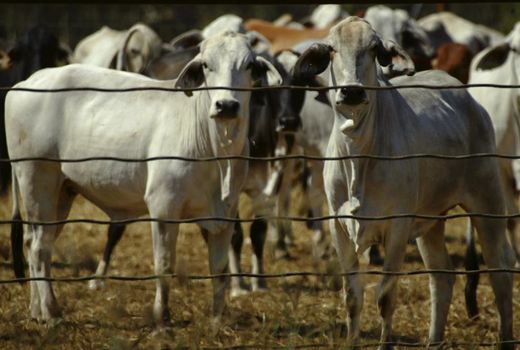
For some time now, scientists have worried that we may be entering a "post-antibiotic era," when the drugs that once defeated potentially fatal infections are no longer effective. Simply put, the bacteria causing infections in many cases are now immune to (or "resisting") the drugs. Since antibiotic-resistant bacterial DNA, if imbibed in water or consumed in meat, can be transferred to humans, many researchers say misuse and overuse of veterinary pharmaceuticals may be responsible, in part, for this global health threat. Large, commercial food operations rely on veterinary drugs, including antibiotics, to promote bigger growth of the animals. However, after the animals excrete the drugs, these antibiotics enter the environment via runoff, leaching, and the spread of manure.
For this new study, then, environmental toxicology researchers at Texas Tech University decided to look at whether these drugs become airborne. Over a period of six months, they gathered airborne particulate matter from 10 commercial cattle yards each with a capacity of 20,000 to 50,000 head of cattle, within 200 miles of Lubbock, Texas.
"Mass of [particulate matter] collected immediately downwind of feedyards was significantly different than that collected immediately upwind of each feedyard," the authors wrote in the study.
Analyzing the downwind air and comparing it to the upwind air, the researchers found it contained antibiotics, bacteria, and a much greater number of microbial communities containing antibiotic-resistant genes. Specifically, the researchers detected tetracycline, chlortetracycline, and oxytetracycline in 60 percent of particulate matter samples downwind of feedyards, while oxytetracycline was the most frequently detected of these three — all downwind samples contained this one antibiotic, yet so did 30 percent of the upwind samples.
Based on these measurements, the authors noted "there is significant potential for widespread distribution of antibiotics, bacteria, and genetic material that encodes antibiotic resistance via airborne [particulate matter] as a result of the large mass of fine particles released daily from beef cattle feedyards in the Central Plains of the United States." They added that cattle yard-derived microbes, including those possessing antibiotic resistance, are likely transported to new, possibly unexpected locations as well.
Source: McEachran AD, Blackwell BR, Hanson JD, et al. Antibiotics, Bacteria, and Antibiotic Resistance Genes: Aerial Transport from Cattle Feed Yards via Particulate Matter. Environmental Health Perspectives. 2015.



for profit at any cost will cost us all very dearly. Forget about alien invasions or comet-borne plague, we've got plenty of 'resources' in the psychopaths in power to end all life on earth.